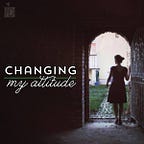Ugly insults were exchanged leading to fistfights. Murderous threats would sometimes follow.
An assault with boiling water was once thrown unexpectedly.
There was gunplay, beatings with tree !switches”, extension cords, and a favorite disciplinary weapon of choice — a barber”s belt. Of course, this would bring about teenage runaways to the nearest safe-heaven.
These aren”t scenes from the latest Spike Lee or Lee Daniels film. Instead, they are but a handful of real-life moments plucked from a place we called home or as I sometimes describe as an emotional minefield.
South Central L.A.
My time in South Central Los Angeles spanned from the 1970s through the late “80s. This was a period where street crime, police hostility, and the influx of crack cocaine converged on tens of thousands of inner-city lives.
Life in L.A. was familiar yet nerve-wracking. Only I didn”t view my time there in that regard. This was life as we knew it — an expected and exhausting state of being both in the home and the streets best described as threat assessment mode.
There is no doubt my siblings and I were loved by our parents. We had shelter, heat, hot meals, clean clothing, verbal validation accompanied by actions that reminded us that we mattered. Sadly, these life necessities weren”t enough to fend off the disruptive nature of the abuse — the kind of chaos that made my sibling”s runaways as suspenseful as prison breaks.
If the abuse was a joke, then the punchline was a group of children who would develop anxiety, fear of death, drug addiction, racial disassociation, and fear of intimacy. Maybe you can relate to some of these behavioral consequences. Maybe you know how it looks and feels.
The reality is that our well-meaning parents were not some sanitized, TV version of an African American couple that fled the racist south for opportunity. They too were abused children who would later face racial discrimination and unknowingly indoctrinate their kids into generational trauma.
Much of the same applies to some of our former neighbors. What this boiled down to were 1) people unknowingly engaged in abusive behavior and 2) individuals who did not have the emotional tools kept abuse in play similar to how COVID variants mutate.
The Blessing of Reflection
Many years later as a mid-level corporate executive, I”d look back on my youth in L.A. as a blemish of sorts — a tough, unfortunate segment of my life. That is until I experienced a watershed moment — a close call where I thought that I, this middle-aged man would once again be thrust into a street altercation — a misperception of events on my part. I thank God that I was wrong.
Several short months after deep reflection, it dawned on me that I grossly understated the impact of my time in L.A. as a youth. I downplayed the impact that domestic and street violence had on me. Perhaps this was a means to protect me from the truth.
This reflection was manifested through a book I would later pen, !There Was Violence” — an examination of how deeply violence impacted the lives of my family. What I did not foresee were the therapeutic value and learnings that would follow.
A Renewed Outlook
I welcomed an unexpected level of forgiveness for family members and residents whom I resented and was angry with for years. This anger was rooted in the poor optics, disruptive nature, unfairness, and pain of violence.
Following forgiveness was the gift of empathy. There was an eagerness to revisit past events and to the best of my ability understand what happened to these souls.
Next, I would experience a gradual growth of peace within my soul particularly when I began using the appropriate language to describe my family”s experience (abuse, trauma, neglect, etc.). I was giving that segment of my life it’s proper due — calling it what it was.
Lastly, and most importantly, I felt a sense of service. Simply writing a book wasn”t good enough. As a survivor of abuse and trauma, I needed to do more, which is why I formed The InVia Foundation, a California-based 501-(3) © dedicated to developing free technological tools and services for victims of violent trauma.
The TWV Community
What I would like from you is to join the TWV community by following the official social media on Facebook (There Was Violence), Twitter (@therewasviolen1), and Instagram (therewasviolence).
Be on the lookout for an important announcement in April ’22 for a very special spring kickoff.
Most of all, be kind to yourself and be well.
About Imani Kaliid
Imani Kaliid is the author of “There Was Violence,” President of the InVia Foundation and host of the “Misconnected Podcast.”
The InVia Foundation is a 501(c)(3) nonprofit entity based in California that is focused on technological tools and services for victims of violent trauma. “There Was Violence” serves as a relatable testimony and unfortunately common experience for multitudes of victims who remain silent, struggling or healing, which is why Kaliid sought a more direct avenue to connect and contribute to the world by establishing the InVia Foundation to save victims in need.
Access Links:
- Official website: www.therewasviolence.com
- Website, “There Was Violence”: https://www.therewasviolence.com/restaurant*
Purchase Links:
- Amazon: https://www.amazon.com/There-Was-Violence-Transformed- L/dp/B09BG5CVL Y
- Apple Books: https://books.apple.com/us/audiobook/there-was-violence-how- crime-abuse-and-drugs/id1579108431
- Google Books: https://play.google.com/store/books/details/Imani_Kaliid_There_Was_Violence?id=RPM 4EAAAQBAJ
Social Media and Press
- Twitter: https://twitter.com/therewasviolen1
- Instagram: https://www.instagram.com/therewasviolence/
- YouTube “Companion Channel” for Bonus Testimonial from Imani Kaliid: https://www.youtube.com/channel/UCTWfAwJUmct4H0x-UMCjHKw/videos
- Tavis Smiley Show: https://ne-np.facebook.com/kbla1580/posts/tavis-smiley- for-friday-october-22nd-2021-dr-uch%C3%A9-blackstock-md-thought-leader- a/246781164135038/
